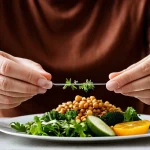Most Common Home Injuries Among UK Seniors
In the UK, common injuries in seniors predominantly include falls, burns, and cuts. Falls are the leading cause and often result in fractures, particularly hip fractures, which can be life-altering. Burns tend to occur in the kitchen or bathroom, where hot water and cooking appliances pose risks. Cuts, although less severe, frequently happen due to slips or handling sharp objects.
According to elderly accident statistics UK, approximately one-third of seniors aged 65 and over experience a fall each year at home. This figure highlights the urgency of addressing senior home safety UK to prevent these incidents. Many falls are linked to hazards like loose rugs, poor lighting, or stairs without adequate handrails.
Also read : What Impact Does Social Interaction Have on the Health of Seniors in the UK?
Contributing factors to these injuries also stem from typical UK home layouts and lifestyles. For instance, older houses may lack modern safety features, and the cooler climate can increase the risk of slips on wet floors. Understanding these circumstances enables targeted improvements in senior home safety UK, reducing the risk of injury and enhancing quality of life.
Effective Home Modifications to Prevent Injuries
Adding home modifications for seniors can significantly reduce the risk of accidents. Key areas to focus on include entrances, bathrooms, and stairs, as these spots often pose the greatest danger. For instance, installing grab bars near toilets and inside showers provides much-needed support. Non-slip mats on bathroom floors and staircases help prevent slips, especially in wet or slippery conditions.
Have you seen this : Enhancing elderly diabetes management: the role of mindful eating in boosting health and wellness
Fall prevention UK initiatives emphasize proper lighting improvements, such as brighter bulbs and motion-activated lights, which enhance visibility during nighttime. Removing clutter, loose rugs, and electrical cords from walking paths reduces tripping hazards effectively.
To injury-proof a home for the elderly, consider wider doorways to accommodate mobility aids and ensure staircases have sturdy handrails on both sides. Elevating frequently used items to easily reachable heights decreases the need for unsafe stretching or climbing.
By combining these adaptations, seniors gain a safer living environment tailored to their needs. This approach promotes independence while minimizing falls and injuries—key concerns within fall prevention UK programs and effective home modifications for seniors.
Exercises and Mobility Strategies to Reduce Risk
Understanding the importance of balance and strength training for seniors is vital in helping prevent falls. In the UK, a variety of recommended senior exercises focus on improving mobility and stability. These often include gentle activities such as standing leg lifts, heel-to-toe walking, and seated knee extensions. These movements are tailored to enhance coordination and muscular strength, which are crucial for mobility improvement elderly.
Complementing these exercises, the proper use of mobility aids like canes and walkers can provide additional support. However, it is essential these aids are correctly fitted and used to maximize benefit and reduce fall risk. For example, canes should be adjusted to allow a slight bend in the elbow, maintaining natural posture during walking.
Physiotherapy plays a pivotal role by personalizing exercise plans and monitoring progress. Leveraging local support services ensures seniors receive consistent guidance, motivation, and safety tips. These combined strategies of exercise, correct mobility aid use, and professional support foster safer movement, helping seniors maintain independence with confidence.
Creating an Actionable Home Safety Checklist
Ensuring safe living for elderly requires a clear, structured approach. A practical home safety checklist seniors UK can guide caregivers and seniors through critical safety improvements tailored to common risks. Start with identifying trip hazards such as loose rugs, cluttered walkways, and inadequate lighting—three frequent causes of senior accidents.
Next, evaluate bathroom safety by installing grab bars, non-slip mats, and raised toilet seats. Kitchen assessments should focus on fire prevention and easy access to essentials to minimize falls. Employing stair gates or secure handrails is essential for multi-level homes.
Ongoing safety maintenance means regular rechecks of installed aids, checking for wear and tear, and updating the checklist as mobility or vision changes. Encourage seniors to report new hazards promptly.
For a thorough evaluation, consider engaging professional services specializing in senior accident prevention. These experts adhere to UK standards and can customize recommendations based on specific home layouts and individual needs. Incorporating their insights alongside the checklist improves durability and relevance.
Implementing this checklist fosters independence and peace of mind, making safe living for elderly practical and responsive to evolving challenges.
Trusted UK Resources for Senior Safety and Independence
Finding reliable support services for elderly UK residents is crucial for maintaining safety and independence. The NHS senior safety resources offer practical guides that cover fall prevention, medication management, and emergency planning. These guides are designed to be straightforward and actionable, enabling seniors and caregivers to implement effective safety measures at home.
Age UK advice is another valuable resource, providing detailed information on financial support, staying active, and coping with loneliness. This organization also helps connect individuals with local community programs focused on home adaptations, such as installing grab rails or improving lighting to reduce hazards.
Accessing these services often begins online or via telephone. Websites for the NHS and Age UK offer easy navigation to relevant topics, and helplines provide direct support. Moreover, many local councils partner with these organizations to run programs offering grants or assessments for home modifications, enhancing independence without costly renovations.
Utilizing these trusted sources ensures seniors receive up-to-date, accurate assistance tailored to their needs, fostering safer environments through expert guidance and effective community support.







